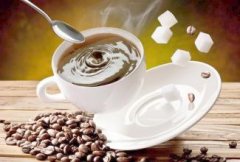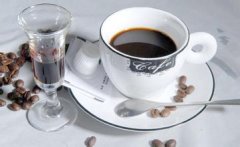A brief introduction to the Market Price of Fine Coffee Bean varieties in Sijas Manor, Costa Rica

There are two kinds of sun treatments in Lajas, which are treated by the times in the process.
Black Pearl (Perla Negra): sun-treated, dried in an elevated bed, turned normally
Black Soul (Alma Negra): tanned, dried in an elevated bed, turned only a few times a day
"Black Soul" has less turning times and higher degree of fermentation than "Black Pearl", but it is also more likely to fail. Under the careful treatment of Lajas, this "Black Soul" has become the best of sun-dried beans with rich flavor, thick and round taste and long tail. With Lajas different treatment of raw beans, showing different flavors, compared with each other, you can definitely have a special experience.
Costa rica Las Lajas Estate Alma Negra
The Black Soul of Las Haras, Costa Rica
Producing area: central valley
Grade: SHB
Treatment method: sun treatment
Altitude: 1300 Murray 1500m
Variety: Caturra & Catuai
Baking degree: moderate baking (moderately shallow) CITY+
Flavor description: passion fruit, drupe, black jujube, blueberry
There are eight Costa rica producing areas, of which Tarazu, the Central Valley and the Western Valley are recognized as the three best producing areas. Las Lajas is located in the foothills of Sabanilla de Alajuela and Poas Volcano in the Central Valley. "Lajas" is the name of the Chakon family processing plant, whose estate has Finca La Mirella and Finca San Luis, the estate that produces the bean. Francisca and Oscar Chac ó n, the third-generation operator of Las Lajas's small coffee processing farm, have been in business since their grandparents for more than 80 years. In 1995, Oscar's father died of cancer. They suspected that the chemical fertilizers and pesticides used on the farm were the culprits. Instead of using toxic chemicals, they switched to natural and homemade compost and adopted natural farming methods that were environmentally friendly and ecologically friendly. Shade planting in the native forest. After five years of organic planting until the soil, leaves, and fruit were analyzed, Lajas became the first organically certified manor in Costa rica in 2000.
Lajas is also the first manor in Central America to start honey treatment and natural sun treatment. Tanning is a very traditional practice, which uses the least resources, but because there are too many uncontrollable factors, it is very difficult to do well. Francesca has added many innovations, such as using the sugar meter (Brix meter), which is often equipped in the wine industry, to measure the sugar content of the fruit, and to determine the best time and treatment of harvest according to the sugar content of Brix. Only those with more than 20% sweetness will be exposed to the sun. The Brix value of general fruit is 14 for apple, 12 for lemon and 18 for passion fruit, but the coffee cherry in Lajas can reach 21 Murray 22%. LaHaas not only does the sun, honey treatment, but also has water to wash beans. The beans grown on the farm are Caturra, Catuai and Villa Sarchi, as well as a small number of Kenyan species such as SL28, Obata and so on.
The natural treatment process of French Sika is quite laborious. Hand-harvested high-sugar cherries are first placed in an African viaduct in the sun for about 10 days, and then placed in a plastic cloth-covered greenhouse to create more direct heat and continue to dry. until the water content reaches 11.5%. The slow drying process allows raw beans to develop more natural sweetness from within, but it also needs more careful care and precise calculation of the number of turns. In the end, the red cherries turn black, giving off the aroma of fruitcake, black sugar and even sherry, and it's done.
Important Notice :
前街咖啡 FrontStreet Coffee has moved to new addredd:
FrontStreet Coffee Address: 315,Donghua East Road,GuangZhou
Tel:020 38364473
- Prev

Costa Rica Sjas Estate Coffee Bean Origin History Culture Introduction
Compared to black pearls, black souls had fewer turns and a higher degree of fermentation, but the possibility of failure was also greater. Under Lahas's careful treatment, this black soul became the best among sun-dried beans. It had rich flavor, thick and round taste, and a long ending. Lahas different processing method of raw beans, showing different flavors, compared with each other, absolutely can have a special experience. Costa ri
- Next

Organic certification of boutique coffee beans in Sijas Manor, Costa Rica, geographical location and climate
Lajas is also the first manor in Central America to start honey treatment and natural sun treatment. Tanning is a very traditional practice, which uses the least resources, but because there are too many uncontrollable factors, it is very difficult to do well. Francesca has added many innovations, such as using the sugar meter (Brix meter) that is often equipped in the wine industry to measure the sugar content of fruits.
Related
- Does Rose Summer choose Blue, Green or Red? Detailed explanation of Rose Summer Coffee plots and Classification in Panamanian Jade Manor
- What is the difference between the origin, producing area, processing plant, cooperative and manor of coffee beans?
- How fine does the espresso powder fit? how to grind the espresso?
- Sca coffee roasting degree color card coffee roasting degree 8 roasting color values what do you mean?
- The practice of lattes: how to make lattes at home
- Introduction to Indonesian Fine Coffee beans-- Java Coffee producing area of Indonesian Arabica Coffee
- How much will the flavor of light and medium roasted rose summer be expressed? What baking level is rose summer suitable for?
- Introduction to the characteristics of washing, sun-drying or wet-planing coffee commonly used in Mantenin, Indonesia
- Price characteristics of Arabica Coffee Bean Starbucks introduction to Manning Coffee Bean Taste producing area Variety Manor
- What is the authentic Yega flavor? What are the flavor characteristics of the really excellent Yejasuffi coffee beans?

